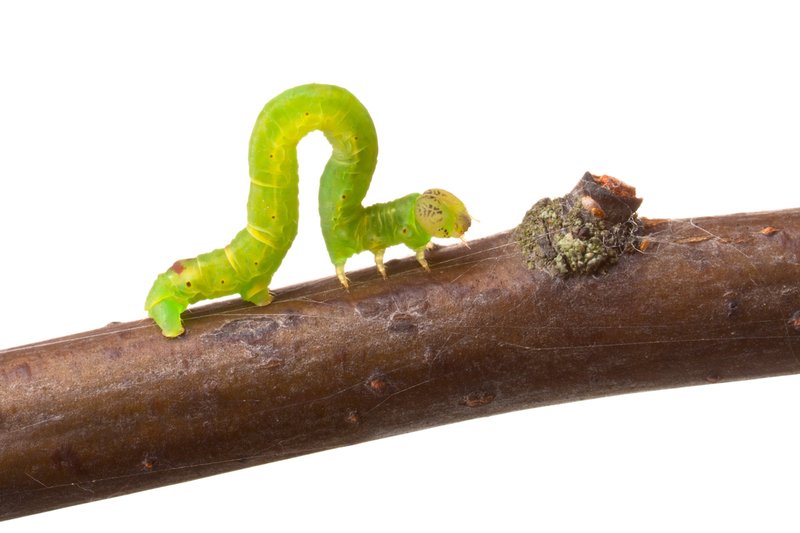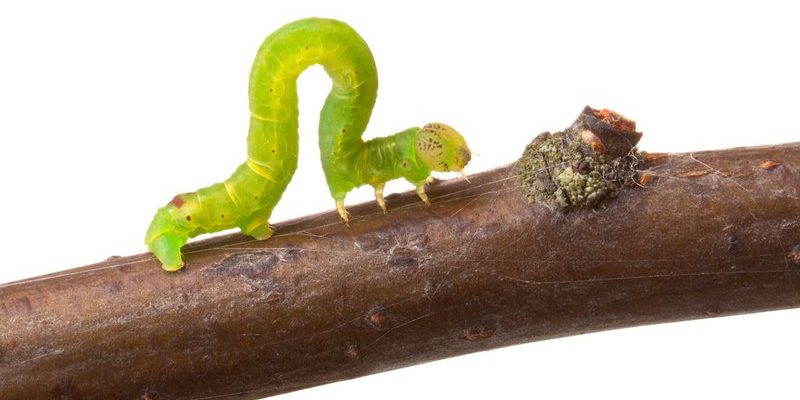
In urban forests, inchworms are not just cute; they’re an important part of the food chain. They help break down leaves and serve as food for birds and other wildlife. However, living in harmony with these little creatures (and they with us) takes a bit of understanding. If you’re wondering how to ensure that inchworms can thrive in urban settings without causing too much trouble, I’ve got some tips and insights for you!
Understanding Inchworms: What Are They?
Inchworms aren’t actually worms, but rather the larvae of certain moth species. They’re called inchworms because they move in a unique “looping” manner, making it look like they’re measuring the ground as they go along. You might have seen them on trees or shrubs, particularly during the warmer months.
These little critters are usually green or brown, which helps them blend into their surroundings—nature’s camouflage at work! Inchworms play a crucial role in the urban ecosystem. They feed on leaves and help with decomposition, enriching the soil. This, in turn, supports the growth of trees and plants, creating a healthier urban forest. So, while they may seem small and insignificant, inchworms have a big impact.
You might be thinking, “How do inchworms fit into my life?” Well, knowing about these little guys can help you appreciate the interconnectedness of nature, even in the concrete jungle. Understanding their behavior, lifecycle, and role in the ecosystem can also help us coexist with them peacefully.
Inchworm Behavior and Habitat
Inchworms typically thrive in deciduous forests, but they can adapt to urban environments quite well. They enjoy areas with ample tree cover and plenty of foliage to munch on. The presence of these tiny creatures is often a good indicator of a healthy urban forest. Here’s what you need to know about their habitat preferences and behaviors:
- Feeding Habits: Inchworms primarily feed on leaves, especially those of trees like oak, maple, and elm. They tend to chew holes in leaves but usually don’t kill the trees.
- Life Cycle: Inchworms undergo a fascinating transformation. After they pupate, they turn into adult moths, which then lay eggs to continue the cycle.
- Coexisting with Humans: While inchworms may munch on your garden plants, they rarely cause any serious harm. By understanding their feeding habits, you can find ways to keep your plants healthy while allowing inchworms to thrive.
By knowing where they like to hang out, you can appreciate their role and help maintain the balance of your urban forest.
Challenges Faced by Inchworms in Urban Areas
Living in an urban environment can be tough for inchworms. They face several challenges that can affect their population. Here are a few issues that might arise:
- Pollution: Urban areas often have higher levels of air and soil pollution, which can impact plant health and, in turn, the food supply for inchworms.
- Loss of Habitat: With cities expanding, trees and greenery are often cut down, reducing the habitat available for inchworms to thrive.
- Pesticides: Homeowners or city management may use pesticides to control pests, but these can also harm beneficial creatures like inchworms.
By recognizing these challenges, we can take steps to make urban forests more friendly for inchworms and other wildlife.
Coexistence Tips: Nurturing Urban Forests and Inchworms
You might be wondering how you can help inchworms thrive in your urban forest. Here are some practical tips for creating a more welcoming environment:
- Plant Native Trees: Native trees provide food and shelter for inchworms and other wildlife. They also require less maintenance and are better adapted to local conditions.
- Avoid Pesticides: If you’re gardening, try using organic methods to keep pests at bay. This helps protect inchworms and other beneficial insects.
- Encourage Biodiversity: Create a diverse garden by mixing different plant species. This can provide a variety of habitats and food sources for inchworms and other animals.
By taking these small steps, you’re not only helping inchworms but also contributing to a healthier urban ecosystem.
Getting Involved in Your Local Urban Forest
If you’re passionate about wildlife and urban greening, consider getting involved in local initiatives! Many cities have organizations dedicated to maintaining and improving urban forests. Here’s how you can get active:
- Join a Tree Planting Event: Local groups often organize events where volunteers plant trees and shrubs in urban areas. This is a great way to meet others who care about the environment.
- Participate in Clean-up Days: Help clean up parks and urban forests to keep them healthy for inchworms and other critters. Reducing litter helps create a safer environment for wildlife.
- Become a Citizen Scientist: Some projects allow you to track wildlife, including inchworms, in urban areas. This data can help scientists understand how urban forests are changing.
Getting involved is an excellent way to learn more about your local ecosystem while making a difference!
Why Urban Forests Matter for All of Us
Urban forests are more than just patches of greenery—they’re essential to our health and happiness. These spaces provide shade, improve air quality, and support biodiversity. When we support inchworms and other wildlife, we’re investing in our own well-being, too.
Maintaining these ecosystems is like keeping the balance in a well-tended garden. It requires care and attention, but the rewards are worth it. You get to enjoy a beautiful, vibrant environment filled with life, and you contribute to a healthier planet.
So, the next time you see an inchworm inching along a tree branch, remember that it’s part of a larger story—one that intertwines humans and nature in a dance of coexistence.
In conclusion, by embracing inchworms and nurturing urban forests, we not only celebrate the small wonders of nature but also work towards a more sustainable future for all living beings. Let’s protect these tiny creatures and the larger ecosystems they help sustain, ensuring a bright future for our urban green spaces.

